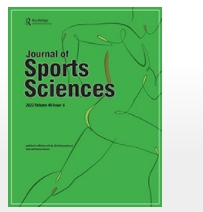Rampinini E1, Impellizzeri FM1, Castagna C2, Abt G3, Chamari K4, Sassi A1, Marcora SM5
1, Human Performance Laboratory, Sport Service MAPEI, Castellanza, Varese, Italy; 2, School of Motor Science, University of Torvergata, Rome, Italy; 3, Unitè de Reserche “Evaluation, Sport, Santè”, National Centre of Medicine and Sport Science in Sport, El Menzah, Tunisia; 5, School of Sport, Health and Exercises Sciences, University of Wales, Bangor UK

The aim of this study was to examine the effects of exercise type, field dimensions, and coach encouragement on the intensity and reproducibility of small-sided games. Data were collected on 20 amateur soccer players (body mass 73.1 +/- 8.6 kg, stature 1.79 +/- 0.05 m, age 24.5 +/- 4.1 years, VO(2max) 56.3 +/- 4.8 ml x kg(-1) x min(-1)). Aerobic interval training was performed during three-, four-, five- and six-a-side games on three differently sized pitches, with and without coach encouragement. Heart rate, rating of perceived exertion (RPE) on the CR10-scale, and blood lactate concentration were measured. Main effects were found for exercise type, field dimensions, and coach encouragement (P < 0.05), but there were no interactions between any of the variables (P > 0.15). During a six-a-side game on a small pitch without coach encouragement, exercise intensity was 84 +/- 5% of maximal heart rate, blood lactate concentration was 3.4 +/- 1.0 mmol x l(-1), and the RPE was 4.8. During a three-a-side game on a larger pitch with coach encouragement, exercise intensity was 91 +/- 2% of maximal heart rate, blood lactate concentration was 6.5 +/- 1.5 mmol x l(-1), and the RPE was 7.2. Typical error expressed as a coefficient of variation ranged from 2.0 to 5.4% for percent maximal heart rate, from 10.4 to 43.7% for blood lactate concentration, and from 5.5 to 31.9% for RPE. The results demonstrate that exercise intensity during small-sided soccer games can be manipulated by varying the exercise type, the field dimensions, and whether there is any coach encouragement. By using different combinations of these factors, coaches can modulate exercise intensity within the high-intensity zone and control the aerobic training stimulus.
J Sports Sci. 2007 Apr; 25(6):659-66.
PMID: 17454533 DOI: 10.1080/02640410600811858